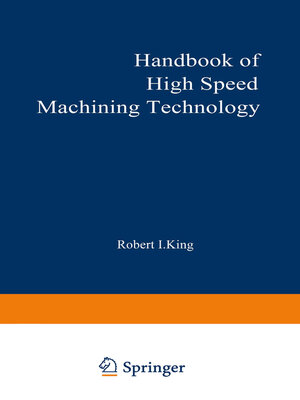Handbook of High-Speed Machining Technology
ebook ∣ Chapman and Hall Advanced Industrial Technology Series
By Robert King

Sign up to save your library
With an OverDrive account, you can save your favorite libraries for at-a-glance information about availability. Find out more about OverDrive accounts.
Find this title in Libby, the library reading app by OverDrive.



Search for a digital library with this title
Title found at these libraries:
| Library Name | Distance |
|---|---|
| Loading... |
The United States now spends approximately $115 billion annually to perform its metal removal tasks using conventional machining technology. Of this total amount, about $14 billion is invested in the aerospace and associated industries. It becomes clear that metal removal technology is a very important candidate for rigorous investigation looking toward improvement of productivity within the manufacturing system. To aid in this endeavor, work has begun to establish a new scientific and technical base that will provide principles upon which manufacturing decisions may be based. One of the metal removal areas that has the potential for great economic advantages is high-speed machining and related technology. This text is concerned with discussions of ways in which high-speed machining systems can solve immediate problems of profiling, pocketing, slotting, sculpturing, facing, turning, drilling, and thin-walled sectioning. Benefits to many existing programs are provided by aiding in solving a current management production problem, that of efficiently removing large volumes of metal by chip removal. The injection of new high-rate metal removal techniques into conventional production procedures, which have remained basically unchanged for a century, presents a formidable systems problem, both technically and man agerially.The proper solution requires a sophisticated, difficult process whereby management-worker relationships are reassessed, age-old machine deSigns reevaluated, and a new vista of product/process planning and design admitted.







